Types of Kitchen Knives
Knives are a necessity in every kitchen, but the wrong knife will make your job more difficult – sometimes much more difficult. Purchasing decent knives is a must, and selecting the right knife for the job makes your work easier and faster.
In my next few posts, I’ll talk about what knives you need and how to buy and use them.
The Most Popular Types Of Kitchen Knives
First, let’s talk about common types of kitchen knives. By no means are these the only knives you might find in a kitchen. There are plenty of specialty knives (like the Santoku knife, used for Asian cooking, or the oyster knife, used for prying open oysters).
But to begin with, every serious cook should have at least these cutting tools:
Boning Knife
With its thin and short blade (five or six inches long), this tool is ideal for removing large meat bones.
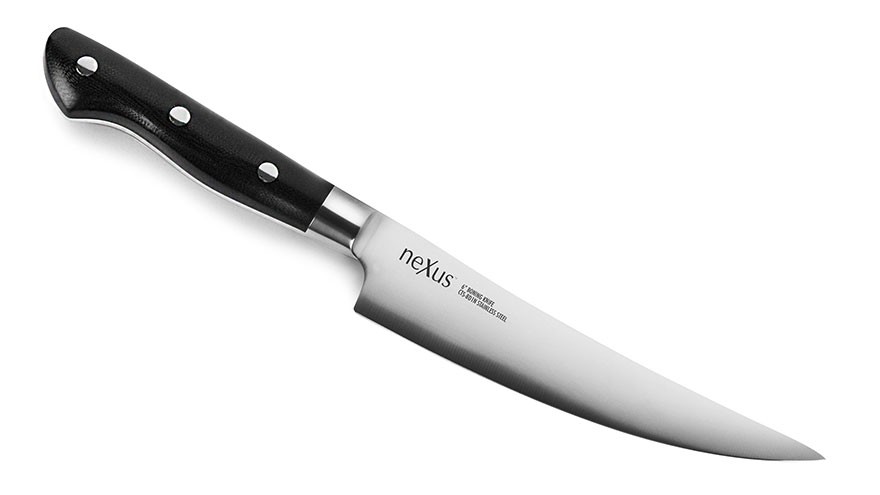
Carving Knife
This utensil typically has a thin, approximately 8 inch, blade and is used for removing meat from the bone and slicing hot meats.
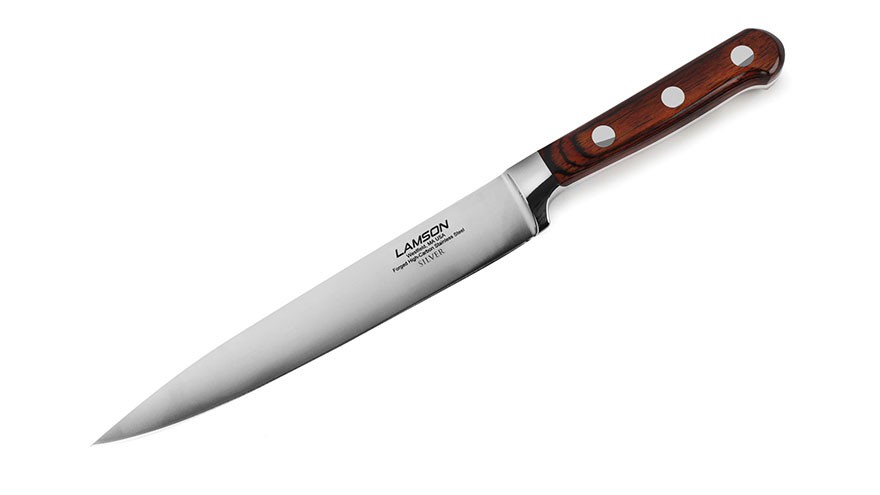
Cheese Knife
A wide and thin knife designed for cutting hard and soft cheeses.
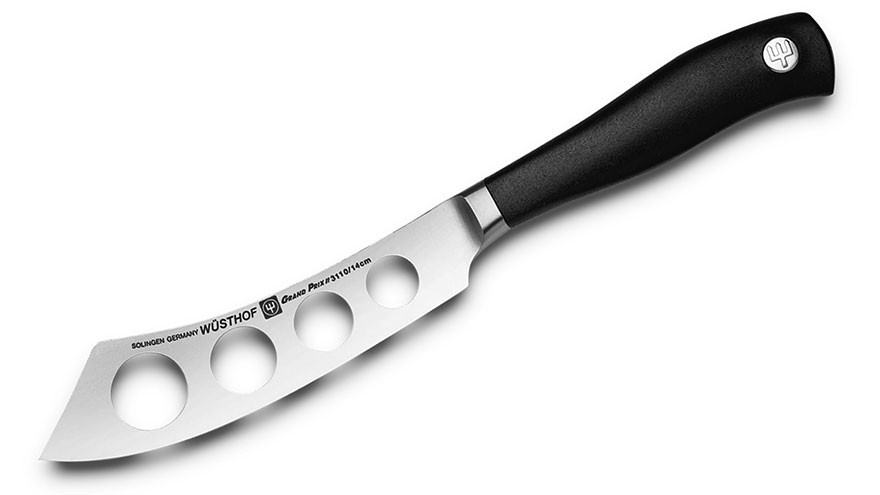
Chef (or Cook’s) Knife
A sort of all purpose knife, used for a wide variety of dicing, slicing, mincing, and chopping. They are usually either six, eight, ten, or twelve inches long and should be purchased according to hand size.
Chefs with small hands need a smaller length and chefs with larger hands need a longer length.
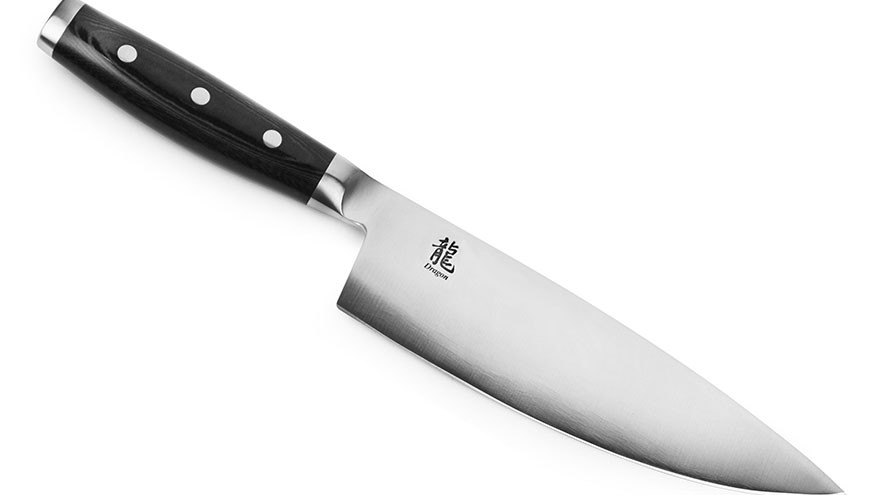
Cleaver Knife
A wide knife about six inches long, used to chop, pound, crush, or shred food, especially hard bones or vegetables.
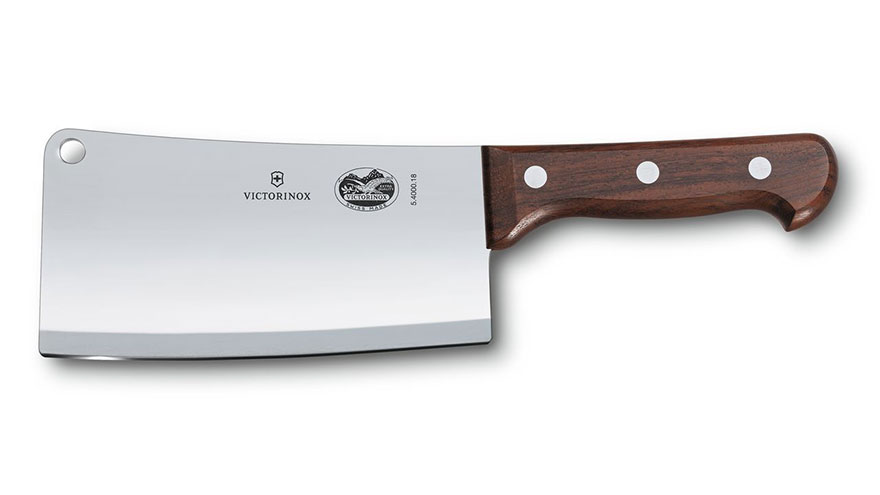
Filet Knife
This tool has a flexible blade about six to 11 inches in length, and is designed for filleting fish(seafoods).
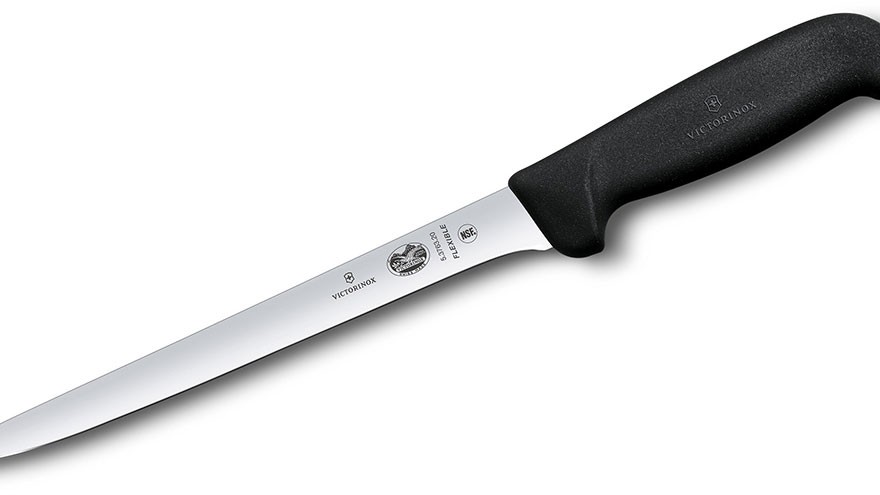
Frozen Food Knife
With its unique saw-toothed blade, these cut easily through hard items, including blocks of frozen vegetables.
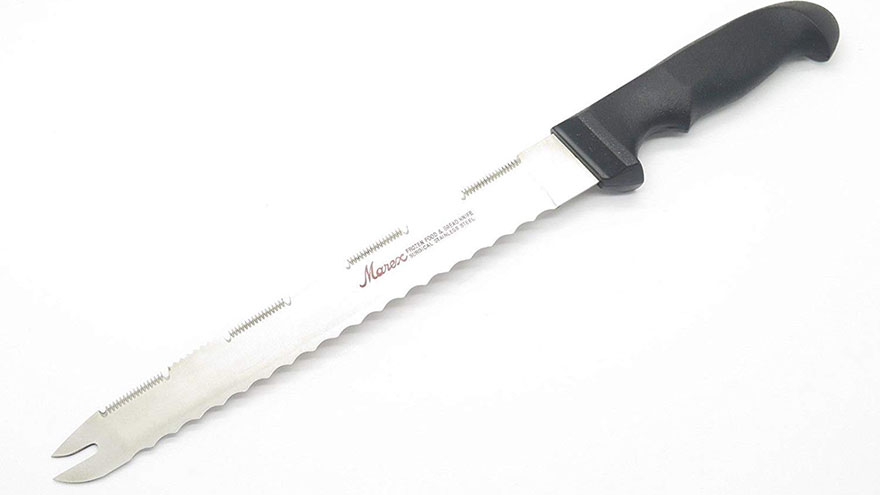
Lettuce Knife
Designed to prevent cut edges of lettuce from browning, this is a plastic, serrated tool.
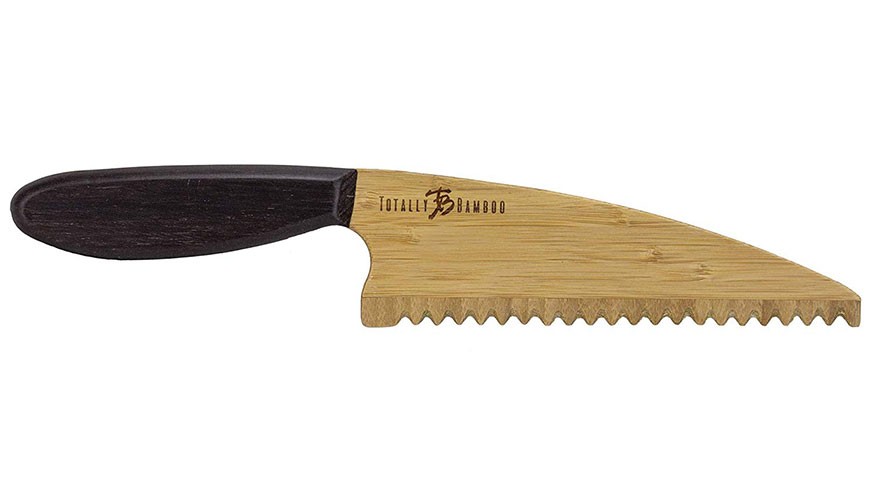
Mincing Knife
With either one or two blades, this knife usually has a rounded handle and is used to cut food into tiny pieces.
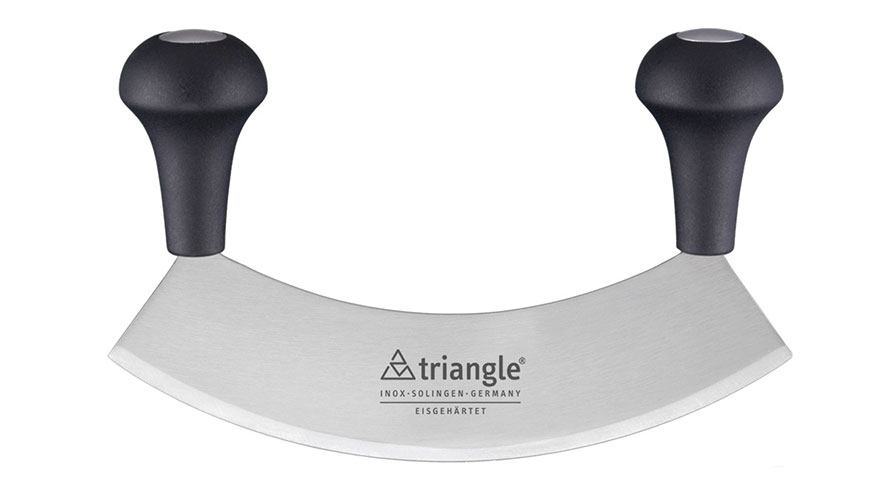
Paring Knife
A small tool (three to five inches long), used for peeling. An alternative to is the Bird’s Beak knife, which has a shorter blade (usually no more than three inches long).
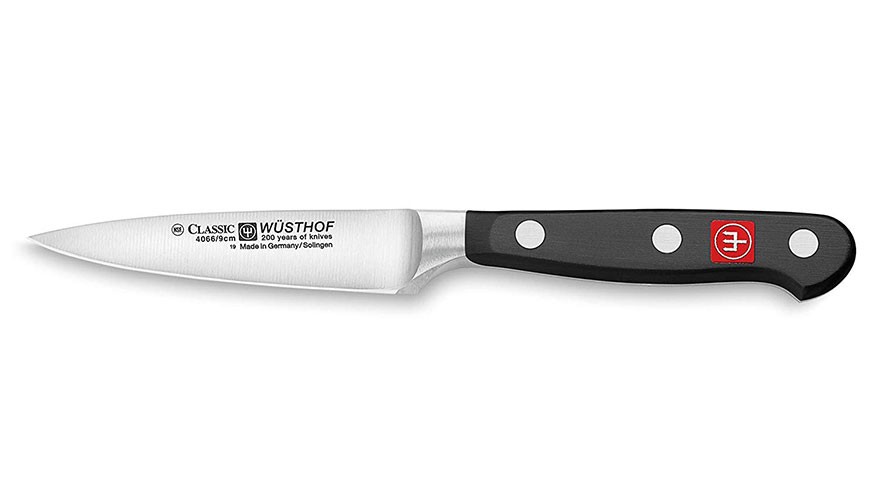
Serrated Knife
With its slightly notched blade of five to 10 inches, serrated knives are sometimes used for food that’s soft inside but hard on the outside, like crusty bread.
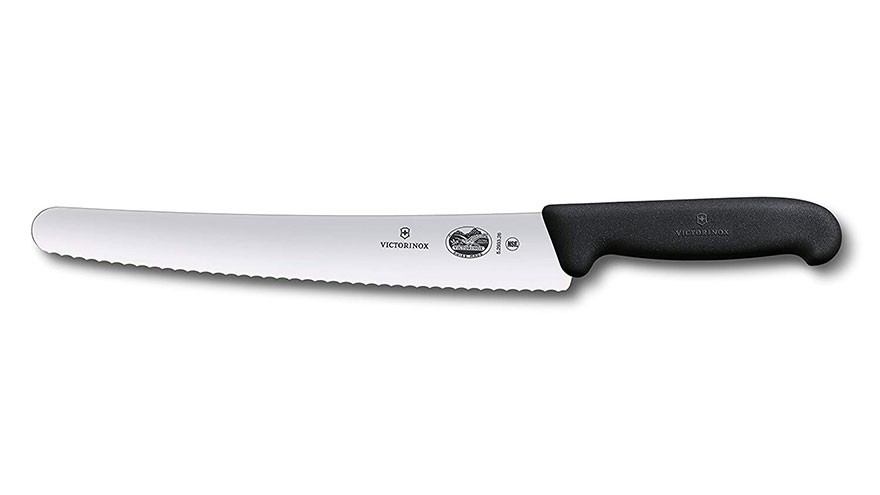
Utility Knife
Useful for cutting cheese and fruits, this utensil is usually between four and seven inches in length.
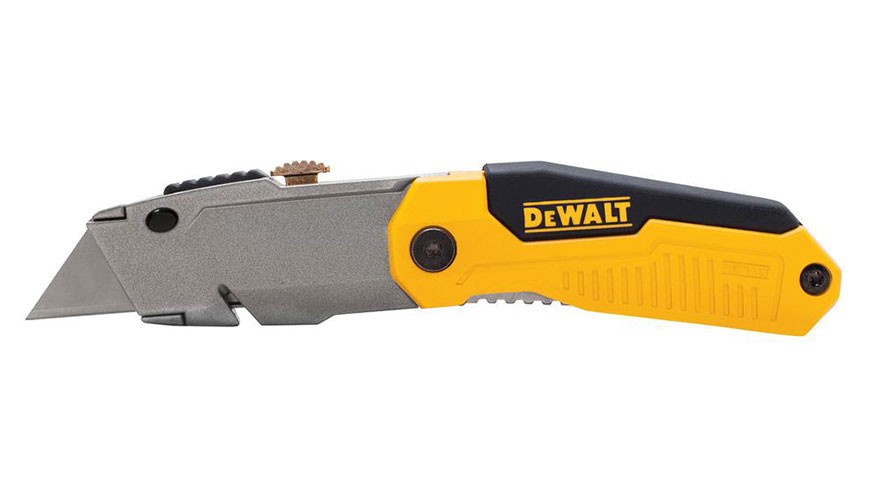
Types of Knife Materials
Ceramic Knife
Hard, but brittle. Ideal for slicing, ceramic knives hold their edge longer than steel. However, only a professional (using a diamond sharpener) should sharpen them.
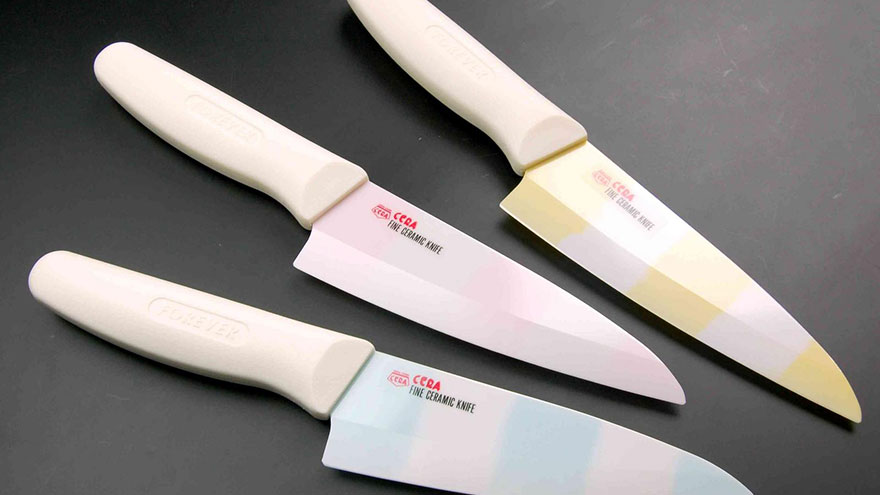
High-Carbon Stainless Steel Knife
Durable, stays sharp almost as well as high-carbon steel, and rust and stain resistant. High-carbon stainless steel knives are fairly easy to sharpen and are typically the material of choice for great-quality, general use knives.

High-Carbon Steel
Durable, stays sharp longer than many other materials, and easy to sharpen. However, high-carbon knives can break under a lot of pressure and discolor when used on high acid foods (like tomatoes) without being washed promptly. They may be polished with fine steel wool and can be kept rust-free by storing with a fine coat of vegetable oil.
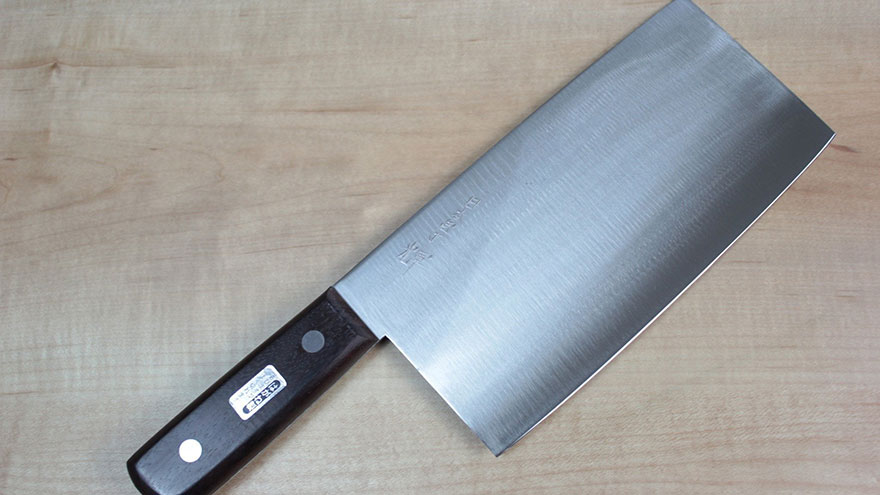
Plastic
Plastic knives are usually serrated and are really only useful for preventing browning on cut vegetables.
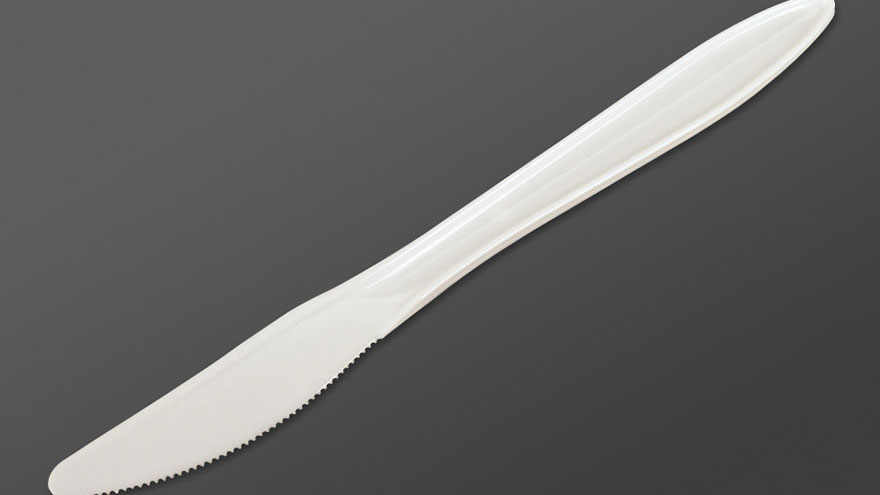
Stainless Steel
Extremely resistant to rust and discoloration and holds a sharp edge well. However, stainless steel knives are not as sharp as high-carbon steel or high-carbon stainless steel knives. They are also difficult to sharpen well.
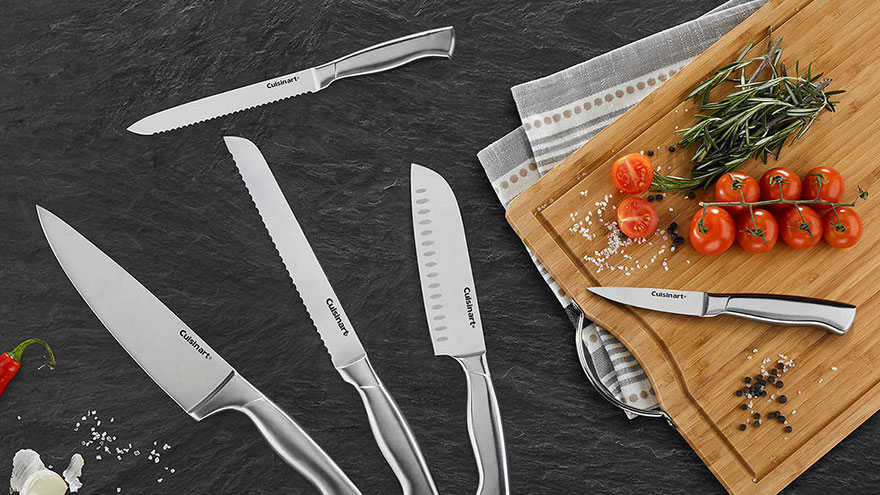
Titanium
Tough and durable, as well as lighter, more rust and stain resistant than steel. Titanium knives also hold their sharpness longer than steel. They are relatively easy to sharpen. Often knives that must be flexible (such as those for de-boning) are made from titanium.
Note: Titanium-coated knives are not nearly the same quality, and should be avoided.
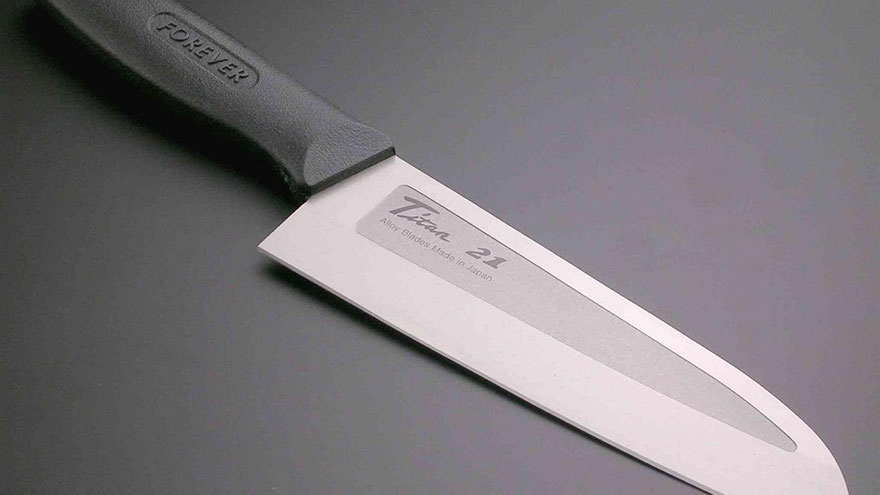
In addition, pay attention to the material used on knife handles. Hardwoods (such as Brazilian Ironwood, Ebony, or Rosewood) make durable handles as long as they aren’t allowed to soak in water. However, it’s difficult to thoroughly clean germs from wood. Wood handles infused with plastic are more sanitary.
Molded plastic handles are easy to care for, but may be difficult to grip if hands are wet. They may also become brittle over time. Knives with metal handles are long-lasting and add a little weight to the tool. Again, some people find them slippery when their hands are wet.
Because there are so many varieties of kitchen knives, and one material may be better for one type of knife than another, it’s best to buy knives individually, instead of as a set.
Check out the video version of this article on YouTube : Types of Kitchen Knives

